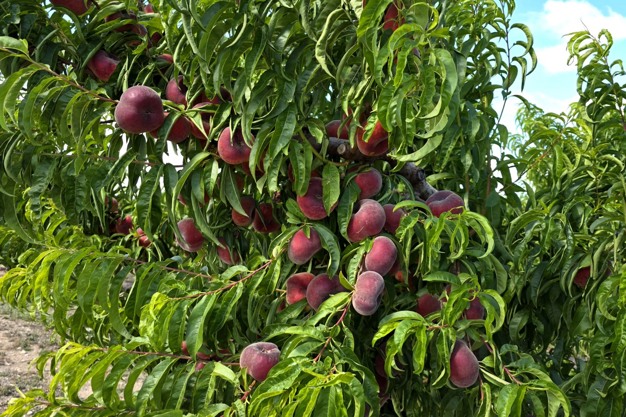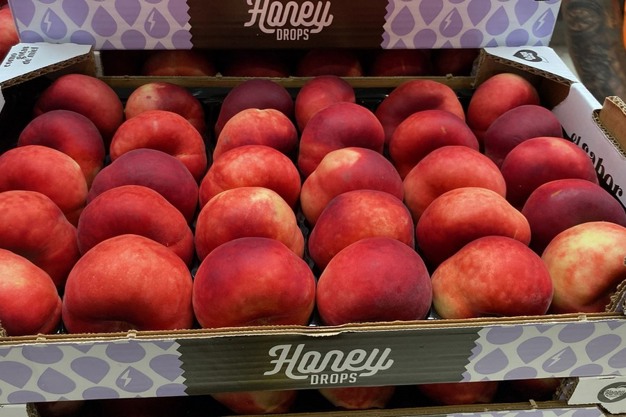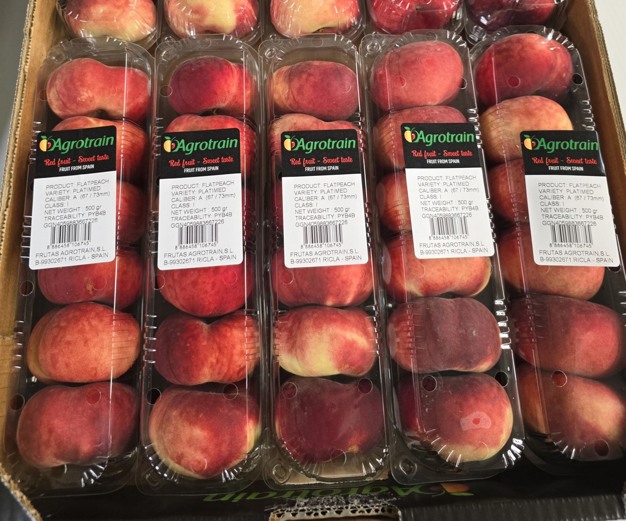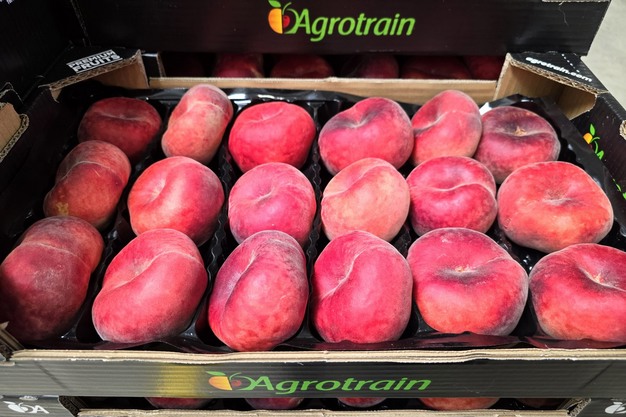The Paraguayo peach campaign continues with the later varieties in the Spanish region of Aragon, where Agrotraín has just started harvesting. "Yesterday we picked the first Paraguayo peaches, which are really high quality ones. In general, the quality of all the late stone fruits that we are growing is high this year because of the contrast between night and day temperatures in June, which has allowed the fruit to acquire a lot of color and to have very good Brix levels."

"This year, the production volume and the calibers will be average, which in the case of Paraguayo peaches means they are mainly medium-sized. This, together with the smooth transition we are seeing this year in the Paraguayo season between Murcia and Aragon has prevented bottlenecks like the ones we saw last year," says Javier. "In June, there have been some difficulties with nectarines due to a greater abundance of low calibers, and we also had a couple of weeks with a lot of Paraguayos in the market, but at the moment, there's a very favorable situation for the late production from Aragon."

The demand for Paraguayo peaches has been rising for years, and the crop has also expanded, he says. "However, the question is to what extent we can continue to grow in terms of production, and also if we will have to continue looking for new markets. This year, new plantations of club Platerinas are coming into production, and we still don't know how this increased supply could affect Paraguayo consumption, as some of the consumption of Paraguayos and even nectarines could be displaced. In the coming seasons, we will have to keep a close eye on how the products coexist and what happens with consumption, because we will have to continue to look for new markets."

"Nonetheless, for the time being, everything points to this being a good season. Paraguayo peaches have a very long season, lasting from late June to late September, and now that the temperature has risen in Europe we see that the demand is also increasing at a very good time for us."

For more information:
Agrotraín
Tel.: +34 976 606 444
[email protected]
[email protected]
https://www.agrotrain.com
